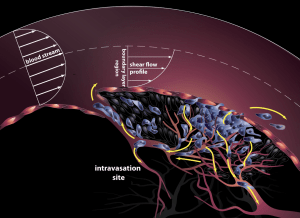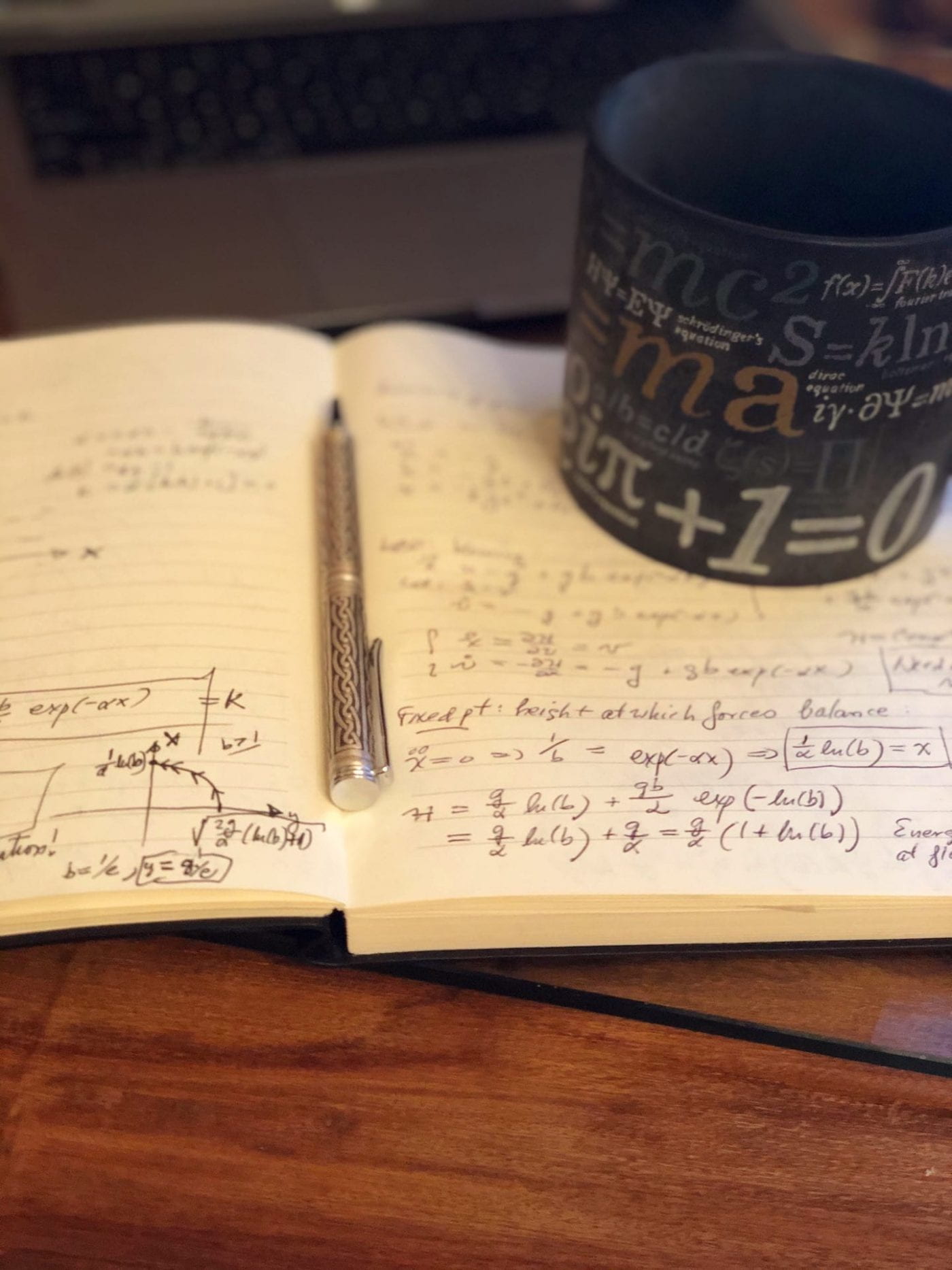Question: Can we use the genetic and morphological data gathered from the ‘metastatic seed’ to design roadblocks to progression ?
Our group uses circulating tumor cell data to build constitutive equations and continuum mechanics models of intravasation and invasion

The deformability, stiffness, and general mechanical properties of individual cancer cells help dictate the allowable pathways by which a metastatic cancer cell can extravasate to form secondary metastatic tumors. Signaling mechanisms among cell colonies form effective communication networks by which cell populations coordinate collective motion to affect their microenvironment. Simple mechanical properties of cells, such as their constitutive equations that govern their deformability, can be quite complex and microenvironment dependent, changing throughout the course of the disease and from patient to patient. Our lab makes use of DIC imaging modalities of cancer cells under shear flow conditions, with active shape and contour algorithms and computational fluid mechanics to estimate constitutive equations under realistic flow conditions to simulate settings in which cancer cell deformation is likely to play an important role, such as the intravasation of cells through vessel walls entering the bloodstream or lymphatics.
Here are three papers to read where you can learn more about our approach. See full publication list for others.
- AM Lee, MA Berny-Lang, S Liao, E Kanso, P Kuhn, OJT McCarty, PK Newton, A low-dimensional deformation model for cancer cells in flow Phys. Fluids 24 081903 (2012)
- KG Phillips, AM Lee, GW Tormoen, RA Rigg, A Kolatkar, M Luttgen, K Bethel, L Bazhenova, P Kuhn, PK Newton, OJT McCarty, The thrombotic potential of circulating tumor microemboli: Computational modeling of circulating tumor cell-induced coagulation American J. of Cell Physiology: Cell Physiology 308 C2229-C236 (2015)
- AM Lee, GW Tormoen, E Kanso, OJT McCarty, PK Newton, Modeling and simulation of procoagulant circulating tumor cells in flow Front. Oncol. 2(108) (2012)

